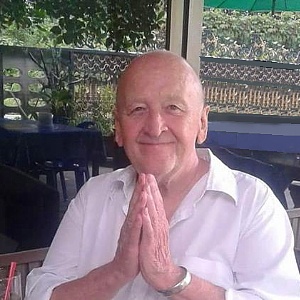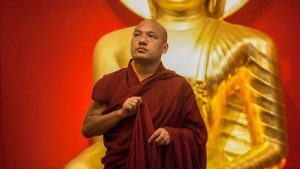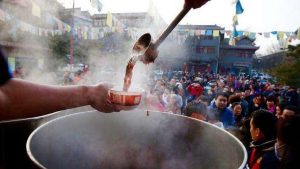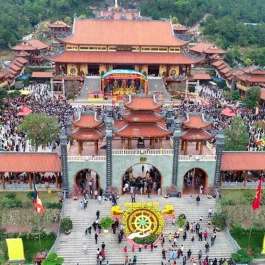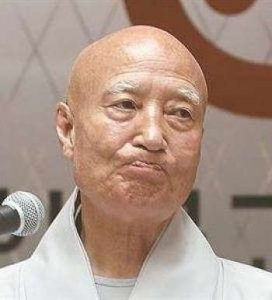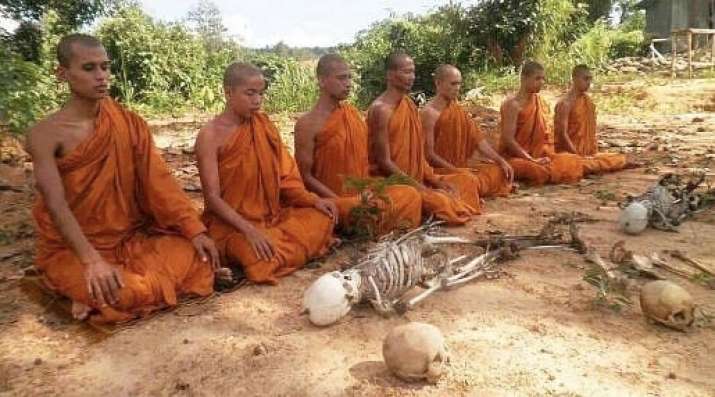
People believe that everything they see and conceive of, including their so-called bodily selves, is fixed and permanently there to be used for fulfillment and enjoyment, yet this is not true and is based on delusional wrong view.
Identifying body awareness and arising consciousness with any sense of a permanent self is actually based on ignorance (Pali: avijja)—delusion about the self in the world and the way things really are, or ignorance of non-self.
Such wrong view is dependent on a delusive compulsion to nourish an egocentric need for a substantial sense of self-assurance; for an undeniable and absolute guarantee that we will always be able to nourish and feed our personal desires for continuing self-satisfaction and existence, which we wish to imagine can never be taken away.
This wrong view arises out of the dangerous and harmful part of the mind that greedily reaches after the things that it hopes and thinks will guarantee its lasting happiness, but which, in the long run, because of the impermanent nature of all things (Pali: anicca), in fact leads to a continuing and disturbing sense of uncertainty; to insecurity and instability; to unhappiness and unsatisfactoriness, because things do not inevitably turn out to be the way we want them to be.
So how are we to understand the body?
The accomplished teacher Luang Phor Viriyang has said: “The first medium is the body. It refers to our physical body, which is capable of obtaining all of the feelings and emotions and communicating through its five senses. The body can co-function with the mind and it is also under its control.” (Viriyang 1)
And further: “One usually thinks of the body as his whole self.”
“Since the lifespan of our body is 50–100 years, human beings usually compete with their lifespan and try their best to use their bodies to the fullest potential.” (Viriyang 22)
In other words, for good or for worse, in the conventional sense we try to get the most out of our lives and our bodies for as long as we can, for as long as they last, especially in terms of physical pleasure, because in our heads we mistakenly consider the body to be a source of satisfying sense experience, as being pleasurable and satisfying, despite the obvious fact that we eventually grow older and become weaker—inherently knowing we are slowly dying.
The so-called beauty of the body is a deeply embedded socio-cultural myth that the mind does not want to let go of. We must, however, learn to accept that the body (our own or another’s) is not a beautiful object in the way we would desire it to be. The body is not there in the world for the purpose of bringing us the fulfillment of our dreams.
Despite the truth that the body is not, in reality, at all what we imagine it to be within the distortions of our own mind’s eye, we foolishly continue believing in the reverse of the truth—ironically, often ignoring the undeniable physical indications of decay, deterioration, and dissolution, maintaining an attitude contrary to obvious visual and physical discrepancies that anyone else can see. Once we’ve understood this, then we must examine the nature of the body to see it not for what we might like it to be, but for what it actually is—which the Buddha describes in a well-known discourse as follows:
“In this body, there are head hairs, body hairs, nails, teeth, skin, flesh, tendons, bones, bone-marrow, kidneys, heart, liver, pleura membranes, spleen, lungs, large intestines, small intestines, gorge, faeces, bile, phlegm, pus, blood, sweat, fat, tears, skin-oil, saliva, mucus, fluid in the joints, urine, and so on.” (Nyanatiloka 119)
In the same dialogue, the Buddha uses an analogy to compare the body to a “fathom-length sack,” the kind that normally contains grain, open at two ends. But instead of containing grain, imagine it is stuffed full of the above-mentioned body parts and ask ourselves how we would feel if our own body-sack were being shaken, so that we might see each body part as it was slowly slipping and sliding, slithering and falling, and that we could observe these individual body parts as they were slowly running down into a heap, piling up upon the ground. We would have ample time to examine and contemplate each of these body parts individually—accumulating there in a heap. (See Nyanatiloka 58–63)
Would we be enamored with the physical body if we examined it in this way—as just an aggregate of components—being aware of its nature made up of compounded individual parts?
One who meditates on the body contemplates himself as just such a body, as just made up of individual parts. And that’s a good place to begin to see the body as it really is, and not as one might want it to be—as an independent entity, or as if one were somehow intellectually separated from the physical “bag of bones” itself.
No matter how well the body parts may function together to sustain life and even to provide momentary pleasures, they are still just body parts that have, through a natural process, merely come together to continue sustaining life.
Using a simile again, the Buddha goes on to say that it is as if “a skilled butcher or his apprentice, having killed a cow, would sit at a crossroad cutting it up into pieces . . .”
Elsewhere, the Buddha observes that even king’s chariot is not a unity, but merely made up of its individual parts. And thus the monk or meditator learns to contemplate the body as though it were just made up of component parts.
The Buddha states that this body is composed not only of component parts, but that the parts are made up of combinations of “matter, liquid, heat, and gas,” and this being so, we should know that this sack full of elements, in accordance with biochemical laws, contains an ever-changing process of arising and ceasing solidity, liquidity, burning energy, and gaseous aridity, which certainly has no fixed, permanent reality.
Imagine solidity turning, through heat, into liquidity, and burning as energy, then turning into invisible gaseous-aridity within your body. Imagine your body as continually consuming itself. Can you imagine that?
The body is just a sack or sheath full of elements that are ever-changing, ever being burned up internally as sources of nourishment, and ever being replenished by new sources of energy.
So, what do you think? Do you assume that you are a fixed unity to be nourished? A so-called “self” to be satisfied, rather than a simple aggregation of component parts, made up of elements that in turn nourish the body parts with requisite energy in order to keep them moving and functioning?
How do you see your own body?
If you have not thought this process through before, perhaps it is time to start.
References
Luang Phor Viriyang. 1999. Meditation Instructor Course I. Bangkok: Willpower Institute.
Nyanatiloka, Mahathera. 1967. The Word of the Buddha. Kandy: Buddhist Publication Society.


